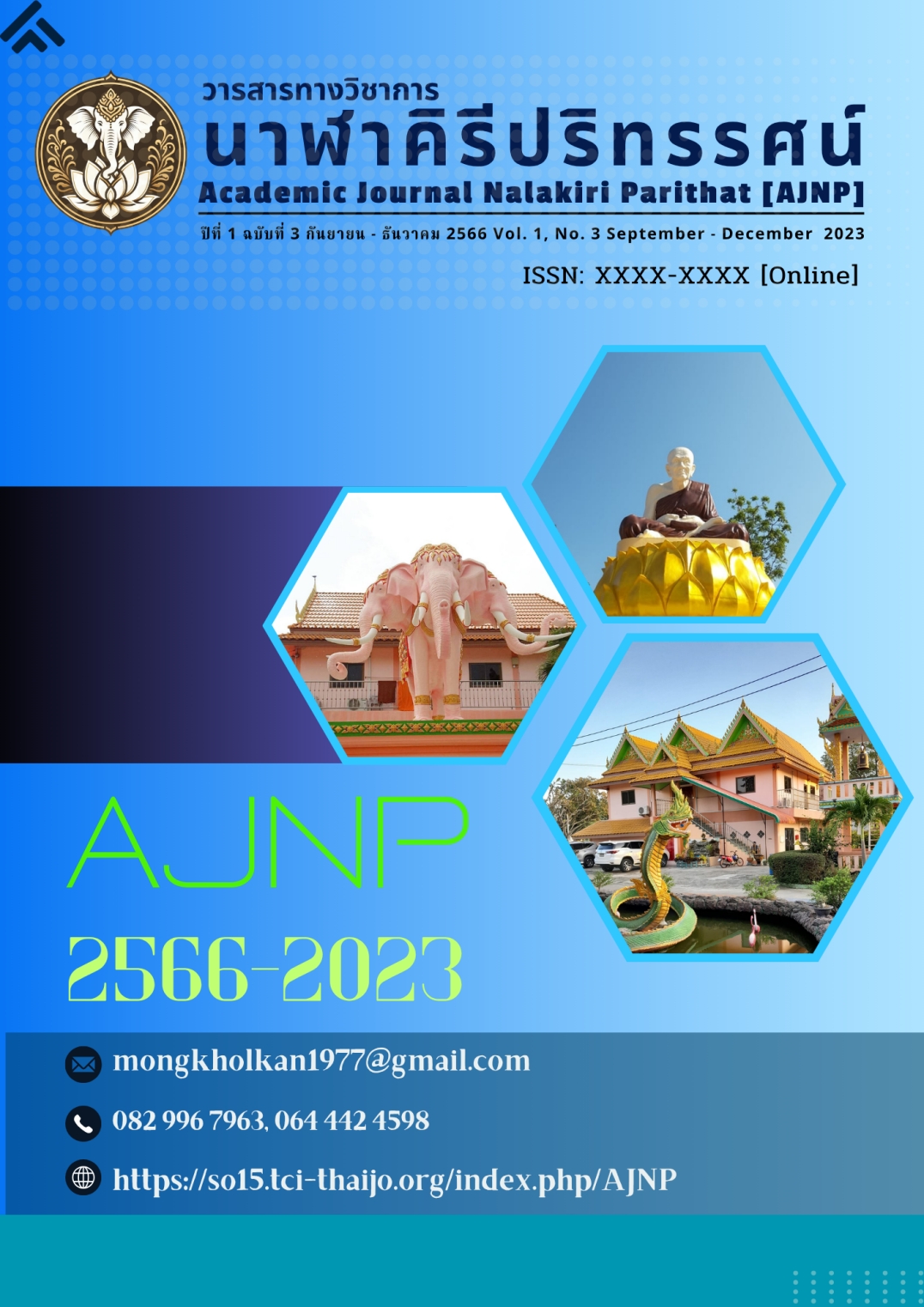THE CONCEPT OF HERMENEUTICS
Keywords:
Hermeneutics, Interpretation, ConceptAbstract
When humans learn to use language to communicate ideas, the interpretation of language will follow. However, in the beginning, humans did not have a systematic and concrete form or method of interpretation. As in the present era, humans can still use language to communicate meanings so that they understand each other and become accustomed to it. Therefore, they do not feel the need to interpret much anymore. However, if there is a misunderstanding of the meaning from what was communicated, they may not blame it as being wrong or right. It may be a distorted interpretation from the original. However, it should be considered just a mishearing. Later, when there were more misunderstandings between the communicator and the receiver due to the use of such language, it was agreed that the language used for communication may have been defective, so the meaning was not conveyed accurately. Therefore, more importance was given to language. This was the starting point of searching for ideas and finding a more thorough method of using language. It was considered a more systematic method for interpretation, which began to form and gradually developed.
Western interpretation has been developed since the glorious era of ancient Greek philosophy. It is based on the concept of the characteristics of the god Hermes or Mercury, considered an ancient Greek god. It is believed that he is responsible for communicating between God and humans by bringing messages from God to inform all humans or from the god Hermes. The god Trismegistus is a legendary figure of the ancient Egyptians who is said to be a great philosopher who reveals knowledge to all humans. From these beliefs, the concept has been developed continuously until it has developed into a branch of philosophy called the science of interpretation or hermeneutics, which deals with methods of interpreting the meaning of various symbols such as words, language, actions, and religious scriptures. Therefore, language is considered a very important communication tool for communicating about interpretation. However, it must be interpreted through language and various symbols, especially the language that humans use to communicate, both spoken and written. Therefore, there are two poles of thought that often have conflicting opinions, namely:
1) The group that believes that correctness, truth, and goodness can be interpreted by using language. This group also has 2 different opinions: the group that believes that only ideal language can communicate the truth. Another group believes that ordinary language is different if it wants to communicate the truth effectively. And 2) The group that believes that correctness, truth, and goodness can be interpreted by real experiences or immediate real phenomena. This group believes that both ordinary language and ideal language cannot communicate the truth at all because the truth cannot be explained by any language. It can only be perceived by real experiences.
References
กีรติ บุญเจือ. (2551). การตีความคัมภีร์ในปรัชญาตะวันตก. กรุงเทพฯ: สวนสุนันทา.
ปรุตม์ บุญศรีตัน. (2550). รูปแบบการตีความคัมภีร์ในพระพุทธศาสนาเถรวาท. กรุงเทพฯ: มหาจุฬาลง
กรณราชวิทยาลัย.
ปรีชา บุญศรีตัน. (2567). รูปแบบศาสตร์แห่งการตีความเชิงปรัชญาในคัมภีร์ธัมมปทัฏฐกถา. กรุงเทพฯ:
มหาจุฬาลงกรณราชวิทยาลัย.
พระคันธสาราภิวงศ์. (2550). คัมภีร์เนตติปกรณ์. กรุงเทพฯ: ไทยรายวันการพิมพ์.
พนารัตน์ จันทร์สิทธิเวช. (2560). วิเคราะห์การตีความหลักพุทธธรรมของเชอเกียมตรุงปะ. กรุงเทพฯ:
มหาจุฬาลงกรณราชวิทยาลัย.
พระมหาสมบูรณ์ วุฑฺฒิกโร. (2548). ศาสตร์แห่งการตีความแนวพุทธ. กรุงเทพฯ:
มหาจุฬาลงกรณราชวิทยาลัย.
วีรชาติ นิ่มอนงค์. (2559). เฮอร์เมนูติกส์ : ศาสตร์แห่งความเข้าใจของพระพุทธปรัชญาเถรวาทและ
มหายานเชิงเปรียบเทียบ. กรุงเทพฯ: มหาจุฬาลงกรณราชวิทยาลัย.
Downloads
Published
How to Cite
Issue
Section
License
Copyright (c) 2025 Academic Journal Nalakiri Parithat

This work is licensed under a Creative Commons Attribution-NonCommercial-NoDerivatives 4.0 International License.



